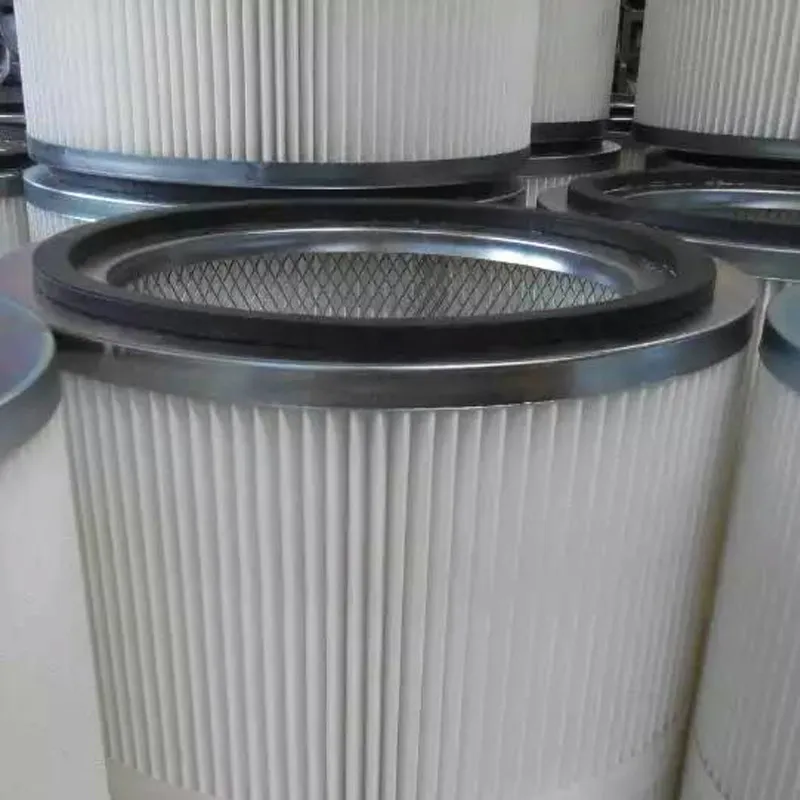 Tel:
+8618931101301
Tel:
+8618931101301
8 月 . 18, 2024 12:21 Back to list
Efficient Filtration Solutions for Dust Collectors Using Pleated Filter Technology
The Importance of Pleated Filters in Dust Collectors
In the realm of industrial manufacturing and air quality management, dust collectors play a vital role in ensuring clean and safe working environments. One of the key components of a dust collector system is the pleated filter. These filters have gained immense popularity due to their superior dust capturing capabilities and efficiency in various applications. This article delves into the significance of pleated filters in dust collectors, their construction, operational benefits, and considerations for selection and maintenance.
Understanding Pleated Filters
Pleated filters are designed with an increased surface area compared to traditional flat filters. This is achieved through a zigzag folding pattern, which allows for more filter media to be packed into a smaller space. Typically made from materials such as polyester, cellulose, or fiberglass, pleated filters are engineered to capture fine dust particles effectively, ranging from larger debris to microscopic pollutants.
Key Benefits of Pleated Filters
1. Enhanced Filtration Efficiency The unique design of pleated filters increases their ability to capture dust particles. The extended surface area allows for more interaction with the incoming air, resulting in higher dust-holding capacity and preventing the release of harmful particulates back into the environment.
2. Improved Airflow Unlike thicker, flat filters that can create resistance and restrict airflow, pleated filters promote better air circulation. This reduces the strain on dust collector systems and helps maintain optimal performance while lowering energy consumption.
3. Longer Service Life Due to their efficient design, pleated filters can have a longer operational lifespan compared to standard filters. They require less frequent changes, thereby reducing operating costs and minimizing downtime in industrial settings.
4. Versatility Pleated filters can be used across various industries, including woodworking, metalworking, pharmaceuticals, and food processing. Their ability to adapt to different dust types and sizes makes them a flexible choice for many applications.
dust collector pleated filter

Selection and Maintenance Considerations
When choosing pleated filters for a dust collector system, several factors should be considered
- Filter Material The choice of filter material will impact filtration efficiency and the nature of particles being captured. It's essential to select a material that aligns with the specific application requirements.
- Micron Rating The micron rating indicates the size of particles the filter can capture. A lower micron rating signifies better filtration, essential for industries dealing with fine dust and hazardous materials.
- System Compatibility Ensure that the pleated filters are compatible with your dust collector system regarding size, shape, and airflow requirements.
- Regular Maintenance Routine inspections and replacements based on the filter's saturation and dust loading are crucial for maintaining the efficiency of the dust collector. Neglecting this can lead to reduced performance and increased energy consumption.
Conclusion
Pleated filters are indispensable in the effective operation of dust collectors, providing high efficiency, versatility, and cost-effectiveness. Their design not only enhances air quality in industrial environments but also contributes to compliance with regulatory standards. By understanding the benefits and maintenance requirements of pleated filters, industries can harness their advantages to create healthier, safer workplaces. Investing in quality pleated filters is a testament to an organization’s commitment to sustainable practices and workforce well-being.
-
How to choose a high-efficiency air filter? Here comes a professional guideNewsOct.21,2024
-
Air filter: multi-field application, protecting fresh airNewsOct.17,2024
-
Carbon air filter: a green guard to protect air qualityNewsOct.16,2024
-
Can activated carbon completely remove indoor odors and pollutants in air purification?NewsOct.14,2024
-
How to filter air efficiently and ensure indoor air quality?NewsOct.12,2024
-
Activated carbon filter: the invisible guard of clean water lifeNewsOct.11,2024

 Email:
Email:





